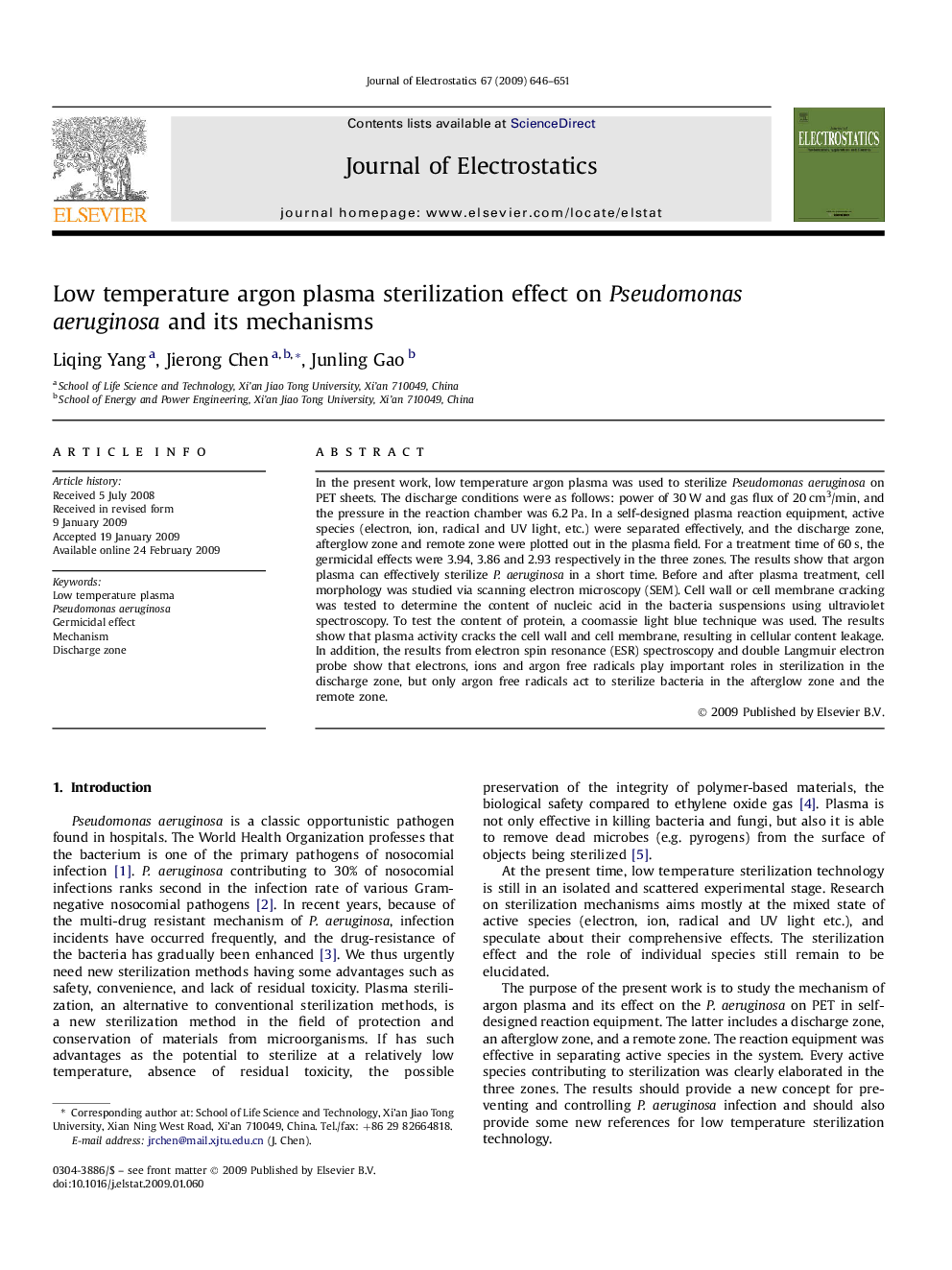| Article ID | Journal | Published Year | Pages | File Type |
|---|---|---|---|---|
| 726229 | Journal of Electrostatics | 2009 | 6 Pages |
In the present work, low temperature argon plasma was used to sterilize Pseudomonas aeruginosa on PET sheets. The discharge conditions were as follows: power of 30 W and gas flux of 20 cm3/min, and the pressure in the reaction chamber was 6.2 Pa. In a self-designed plasma reaction equipment, active species (electron, ion, radical and UV light, etc.) were separated effectively, and the discharge zone, afterglow zone and remote zone were plotted out in the plasma field. For a treatment time of 60 s, the germicidal effects were 3.94, 3.86 and 2.93 respectively in the three zones. The results show that argon plasma can effectively sterilize P. aeruginosa in a short time. Before and after plasma treatment, cell morphology was studied via scanning electron microscopy (SEM). Cell wall or cell membrane cracking was tested to determine the content of nucleic acid in the bacteria suspensions using ultraviolet spectroscopy. To test the content of protein, a coomassie light blue technique was used. The results show that plasma activity cracks the cell wall and cell membrane, resulting in cellular content leakage. In addition, the results from electron spin resonance (ESR) spectroscopy and double Langmuir electron probe show that electrons, ions and argon free radicals play important roles in sterilization in the discharge zone, but only argon free radicals act to sterilize bacteria in the afterglow zone and the remote zone.
